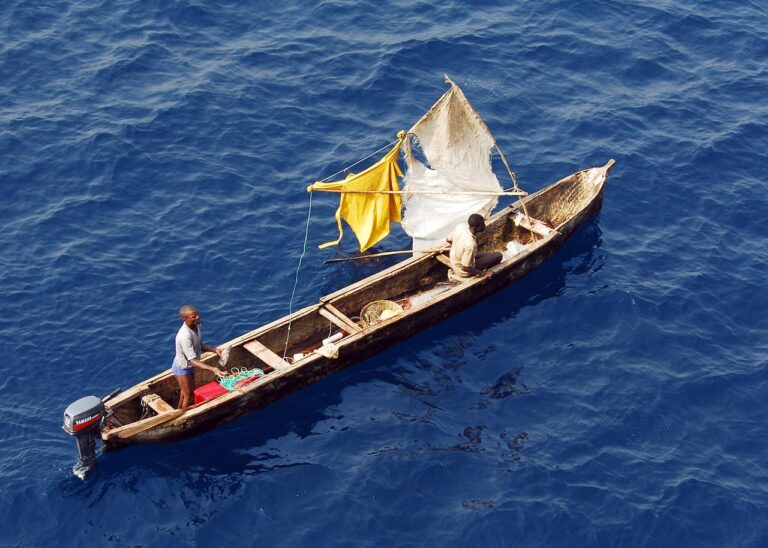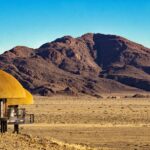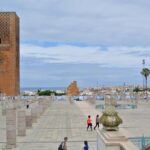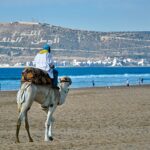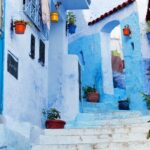Guinea Guide
Guinea is a country with rich tourism potential thanks to its ethnic groups and four natural regions rich in flora and fauna. Places to visit include Sangareya Bay, Bel Air Beach, and Mount Badiar.
Guinea is a country with largely untapped tourism potential. Far from the usual itineraries, it offers curious travelers who like to get off the beaten track a wealth of culture and an incredible diversity of landscapes. Places to visit: Fouta Djalon, Mount Nimba, the Loos Islands, etc.
Guinea, a concentrate of West Africa
Guinea has remained off the beaten track and off the beaten track of mass tourism until today. As a result, it has retained a certain authenticity and offers those who take the time to travel there, beautiful discoveries and encounters. Through these 4 main regions, it is a concentrate of what West Africa has to offer to curious travelers: preserved and very varied landscapes and natural sites, cultural abundance around traditional music and dances, warm and authentic welcome, a fauna certainly discreet but very present with in particular the largest population of wild chimpanzees in West Africa and a flora of unlimited richness highly sought after for pharmacopoeia, …
Of course, it’s not easy, especially when it comes to getting around the different regions of the country, but the moments of sharing and wonder are all the more intense and memorable.
Main features
Surface area: 245,860 km
Population : 14 millions (2023)
Capital: Conakry
Main cities: Kankan (Upper Guinea), Labé (Middle Guinea), N’Zérékoré (Forest Guinea), Kindia (Maritime Guinea).
Languages: French (official language), Soussou, Poular, Malinké (3 main local languages)
Currency: Guinean Franc (subject to strict exchange controls)
National holiday: October 2, Independence Day
Why travel to Guinea?
For timeless hikes between waterfalls and mountains through Fulani villages in the heart of Fouta Djalon.
To discover the mysterious vine bridges in the heart of the primary forest and the traditional masks of the forest region.
To indulge in relaxation on the blond or red sand beaches, or try sport fishing off the Loos Islands.
To participate in colorful festivals (pond festivals, great Mamaya, etc.) during which music and dance punctuate the days in Upper Guinea.
Activities and places of interest
The Fouta River’s numerous waterfalls and cascades offer plenty of opportunities for excursions in the heart of Middle Guinea, with the added bonus of refreshing swims. To name just a few: Salaa Falls, Kambadaga Falls, Ditinn Falls, and Kinkon Falls.
The Lady of Mali , carved into the side of Guinea’s second highest peak, is located in the far north of the country, in a region ideal for hiking and still largely to be explored.
Sérédou , a small village and agricultural center in the heart of the forest region and the Ziama forest, the largest remaining primary forest massif in the country. Forest elephants roam it, sometimes from the side of neighboring Liberia, sometimes from the Guinean side, the opportunity to meet them.
Mount Nimba , a biosphere reserve and UNESCO World Heritage Site, is the highest peak in the country. Spanning three countries (Liberia, Ivory Coast, and Guinea), it is possible to climb it with a local guide and discover its unique flora and fauna. Weather permitting, the view from the summit is unique and incredible.
The Loos Islands archipelago off the coast of Conakry, which is said to have inspired Stevenson’s novel Treasure Island, is a haven of peace off the coast of Conakry. The three main islands can be visited, with a choice of strolling along Tamara Island, relaxing and enjoying beach activities on Kassa Island, or sport fishing from Roume Island.
Boké and its fort, transformed into a museum, bears witness to the history of the slave trade in the region for a journey through time and history.
How to get there?
The country’s only international airport, Ahmed Sékou Touré Airport in Conakry, is located in the heart of the capital.
It is served by various major airlines, the main ones being Air France / Air Portugal / Air Senegal / Brussels Airlines / Ethiopian Airlines / Royal Air Maroc / Tunisair.
How to get around there?
To travel around the country, the most widespread and most used means of transport are bush taxis, which serve the country’s main cities every day. This is a relatively inexpensive but also quite uncomfortable mode of transport, with the number of passengers in a family vehicle being at least 9 and in a sedan 6. However, it is quite possible to pay for two seats, for example, to be alone in the front passenger seat, which is normally intended for two…
There are also a few bus companies that provide connections between regional capitals. The cost of travel is unbeatable, but the waiting times for the bus to be refilled and the frequent breakdowns make it an unsafe means of transport.
For getting around town or near towns, especially for certain excursions, motorcycle taxis are very practical and available everywhere. However, in terms of safety, they offer few guarantees, as they rarely, if ever, provide helmets for their passengers. It’s up to you.
Domestic air links are being developed with the renovation of airports in some major cities, but the offer remains limited to date.
There is no longer any railway line for passenger transport except in the capital for local service.
Climate and weather
The climate of Guinea is characterized by two distinct seasons, a dry season and a rainy season also called winter, but of varying intensity and duration depending on the region.
The rainy season is longer (up to 9 months) in Forest Guinea, shorter and moderate in Upper Guinea, while it is very intense in Maritime Guinea. As for the temperatures during the dry season, they can reach 40°C in Upper Guinea while they rarely exceed 30°C in Fouta Djalon, but these two regions are subject to a strong harmattan during this time of year.
When to leave?
The best time to explore Guinea begins with the end of the high rainy season in October and continues until January.
From January/February, the dry season sets in everywhere and temperatures rise throughout the country, peaking between March and May. The weather conditions are then less favorable for exploring regions like Fouta, where water levels in rivers and therefore waterfalls drop rapidly, some of which dry up.
The start of the rainy season in June/July is also a pleasant time to travel around the country with temperatures dropping significantly and traffic conditions still being decent.
In August and September, the rains are everywhere and sometimes very intense, and travel becomes more complicated.
Good to know
Take the time to greet your interlocutors properly and if you can, learn a few words of the local language to facilitate initial contacts.
Pay attention to your clothing, especially outside of large cities, by avoiding walking around bare-chested and, if possible, for women, by wearing clothing that covers their legs.
If you are invited to a meal with other guests, avoid eating with your left hand, as it is considered impure. The same goes for greetings.
Be careful of stagnant water, especially during the dry season, because bilharzia is still common in Guinea.
Keep smiling at all times (as much as possible…) and avoid showing signs of impatience which are often poorly perceived.
In large cities, be discreet when taking photos and avoid taking them in front of uniformed men.
What clothes should I bring?
Loose, lightweight clothing to be comfortable in the sun, without forgetting a slightly warmer garment for evenings and nights which can sometimes be cool, especially at high altitudes.
Don’t forget a cap or a bucket hat to cover your head.
Comfortable shoes suitable for walking, especially if you are going to Fouta Djalon.
A scarf or shawl to protect you from the dust that is very present everywhere during the dry season.

